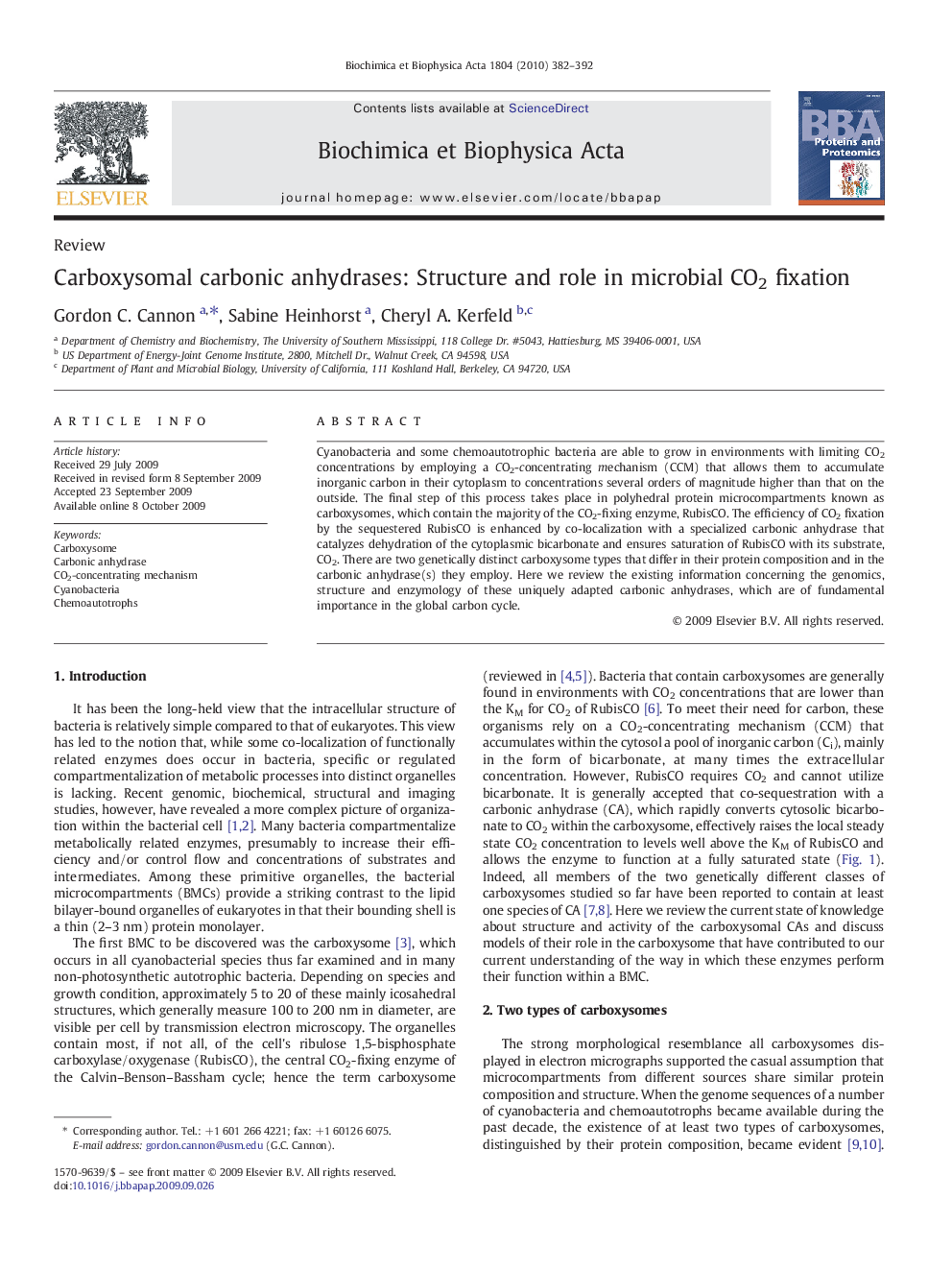| Article ID | Journal | Published Year | Pages | File Type |
|---|---|---|---|---|
| 1178268 | Biochimica et Biophysica Acta (BBA) - Proteins and Proteomics | 2010 | 11 Pages |
Cyanobacteria and some chemoautotrophic bacteria are able to grow in environments with limiting CO2 concentrations by employing a CO2-concentrating mechanism (CCM) that allows them to accumulate inorganic carbon in their cytoplasm to concentrations several orders of magnitude higher than that on the outside. The final step of this process takes place in polyhedral protein microcompartments known as carboxysomes, which contain the majority of the CO2-fixing enzyme, RubisCO. The efficiency of CO2 fixation by the sequestered RubisCO is enhanced by co-localization with a specialized carbonic anhydrase that catalyzes dehydration of the cytoplasmic bicarbonate and ensures saturation of RubisCO with its substrate, CO2. There are two genetically distinct carboxysome types that differ in their protein composition and in the carbonic anhydrase(s) they employ. Here we review the existing information concerning the genomics, structure and enzymology of these uniquely adapted carbonic anhydrases, which are of fundamental importance in the global carbon cycle.
